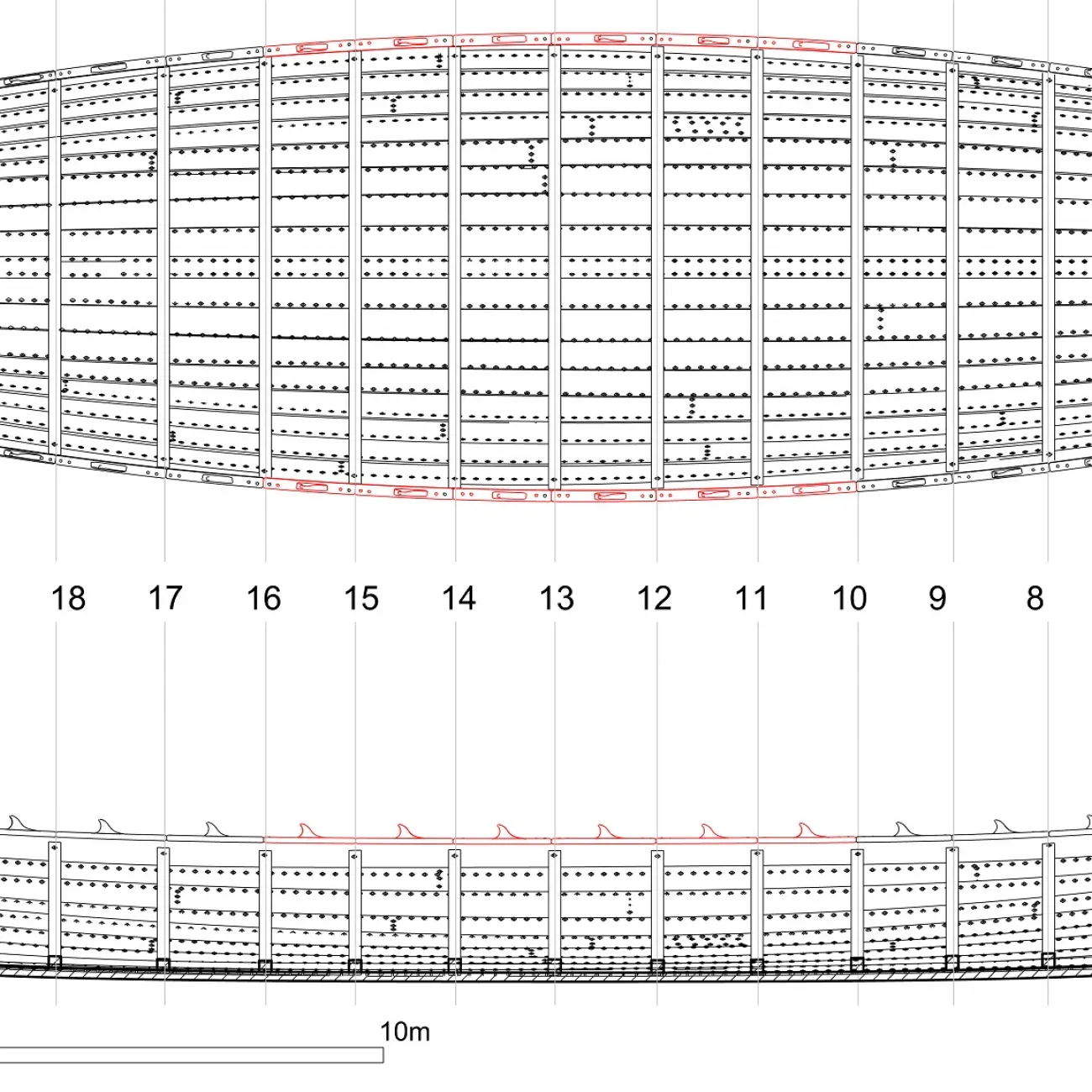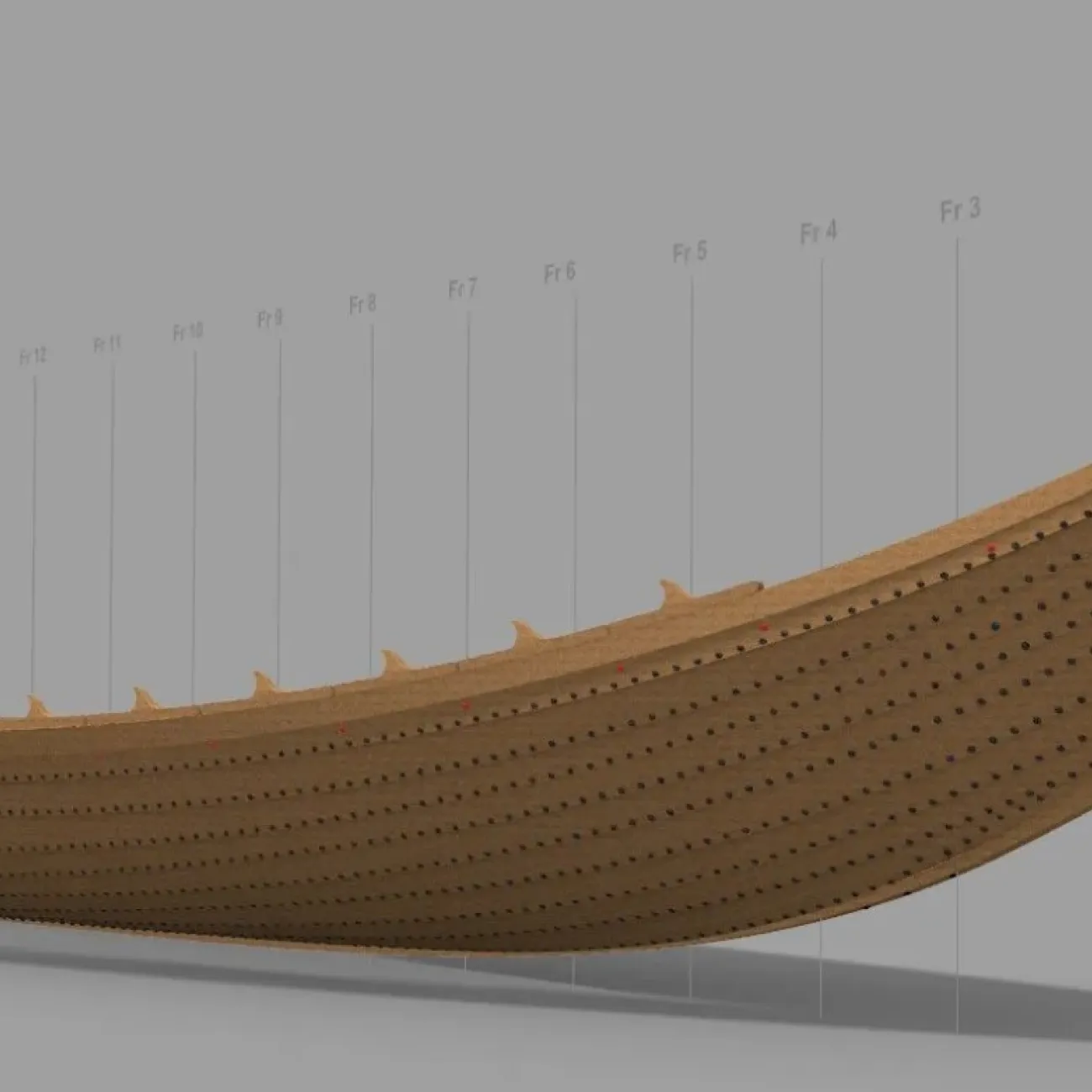The early seventh century AD Anglo-Saxon ship burial from Sutton Hoo in Suffolk, England, is one of the most important ship burials from NW Europe. It is one of the most famous archaeological finds in the world, a status stemming from the high-status grave-goods excavated from the site and now displayed in the British Museum. The image shows a view of the archaeologically excavated remains looking towards the bow in 1939, the surviving rivet positions clearly visible.
The Sutton Hoo Ship Project is undertaking the building of an up-to-date interpretation of the ship, in order to better understand its use, performance and deposition. Phase One of this project is concerned with digital modelling and testing of the hull, prior to the full-scale building of the vessel in Woodbridge, Suffolk, followed by sea trials to understand aspects of the performance and use of such ship-types. Throughout this phase of the project, Dr Julian Whitewright, a maritime archaeologist from the University of Southampton and SMMI member, provided the academic oversight.
The imprint of the 27m long ship, outlined in the soil by the surviving iron-rivets, attests to a large clinker-built vessel. The overall nature of the site, the burial, and the general arrangement of the ship is understood through initial excavation in 1939, and further re-excavation in mid and late 20th century. Despite several attempts, and the building of a half-scale replica in the 1990s, the detail of the vessel has not been fully investigated from an experimental archaeological perspective.
Initial naval architectural analysis undertaken by Southampton alumnus Paul Handley has reviewed the lines of the vessel to establish the viability and seaworthiness of the overall hull shape. This has been followed by highly detailed computational modelling, undertaken by Pat Tanner, using Rhino3D to take account of the proposed hull lines, while respecting the original archaeological record of the ship. Critical aspects of this involved the individual modelling of over 3,500 iron rivets as a means to reconstruct the plank runs of the original vessel. This process allowed discrepancies in the archaeological data to be resolved, identified areas where the overall shape of the ship could be better understood, such as the bow and stern extremities, and resulted in an accurate interpretation of the ship to be used for hydrostatic testing.

Phase 1 has produced a revised construction and lines plan of the vessel to be created, based on all of the available archaeological data, and rendered this into a consistent format for future use within the project. The digital nature of the work has created an invaluable resource for public engagement and visualisation. Finally, if required, proposed structural revisions identified as requirements during the full-scale building process can be tested in advance for their long-term implications.

Undertaking Phase 1 of the project has shed valuable new light on the characteristics and performance of the original Saxon Longship. It has also raised interesting questions about the processes of Experimental Boat and Ship Archaeology in the 21st Century; primarily around the power of digital interpretation to resolve longstanding questions posed to us by the archaeological record, but previously left unanswered.
Further information on the whole project can be found here.